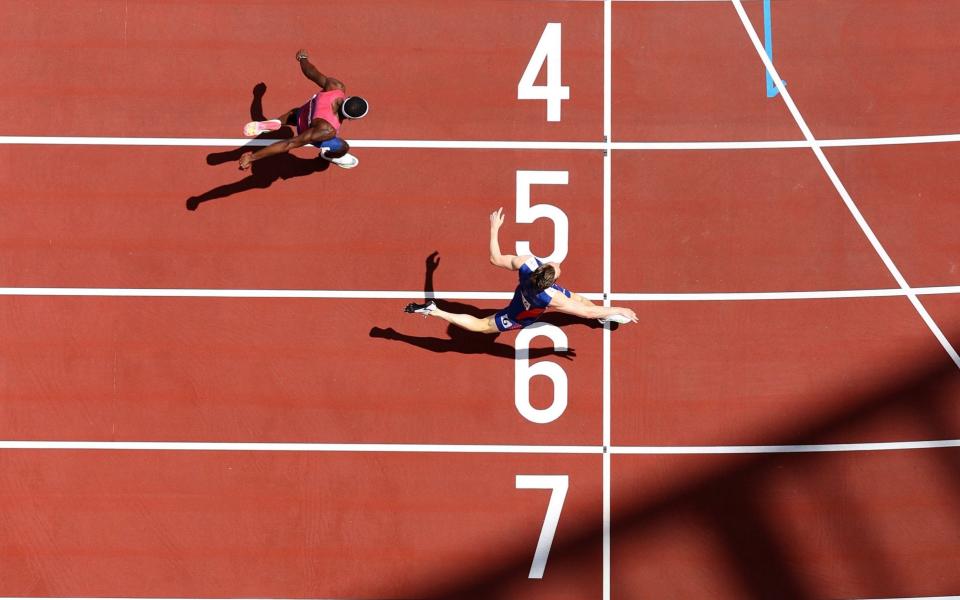Why are so many world records tumbling at Tokyo 2020? The technology behind a track built for speed

Why are people talking about the Tokyo track?
The Olympics athletics competition has seen a number of startling performances, prompting people to take note.
Most remarkable were the two 400m hurdles finals, which saw Karsten Warholm knock a huge 0.76 seconds off his world record and America’s Sydney McLaughlin take 0.44sec off her world record. Both silver medalists also ran under the world record despite failing to win.
Elaine Thompson-Herah produced the second-fastest women’s 100m (10.61sec) and 200m (21.53sec) in history, while the women’s 800m final saw 19-year-old Athing Mu and Keely Hodgkinson break the American and British records respectively.

What is the technology behind the track?
According to Mondo, the Italian company who have designed this new Tokyo track, it is the fastest in history and could provide a one to two per cent performance advantage.
Mondo have designed 12 Olympic tracks in their time and they say more than half of all track world records set in the last 20 years have been set on their tracks.
This one came about after testing multiple versions and materials before settling on the finished product.
Watch: The best and worst Olympics logos over the years
There are two main factors that make this track so fast. The top layer of the track incorporates rubberised granules, while the lower layer has small pockets of air, both of which combine to ensure athletes are provided an element of shock absorption, while also giving them greater energy return. The designers refer to this as a “trampoline effect”.
What are the athletes saying about it?
McLaughlin said: “You can feel the difference. A lot of people talk about the shoes, but I think it’s one of those tracks that gives you that energy right back, pushes you and propels you forward.”
Dalilah Muhammad, who claimed silver behind McLaughlin, said: “As a 400m hurdler you can kind of tell how fast the track is by how easily you are making your steps between the hurdles. It was spot on, at every hurdle.

“I could feel that energy return, especially when you go into (hurdle) eight and feel that death. I didn’t feel like I was going into death.”
What do the authorities say about it?
Seb Coe, World Athletics president, said: “I am genuinely torn. My natural instinct is not to try and strangle innovation. But of course there is a balance.
“It’s clearly fast. How do I view it? I’m viewing really talented athletes who are probably running quicker on fast surfaces.
“We do need to make sure we’re not allowing designs or materials that really transform the sport into something we don’t recognise. I don’t think we’re there.
“At this moment I think we’re in about the right place. We’re not going to be leaving here with thousands of records having been smashed.”
Watch: The new Olympic sport of skateboarding explained

